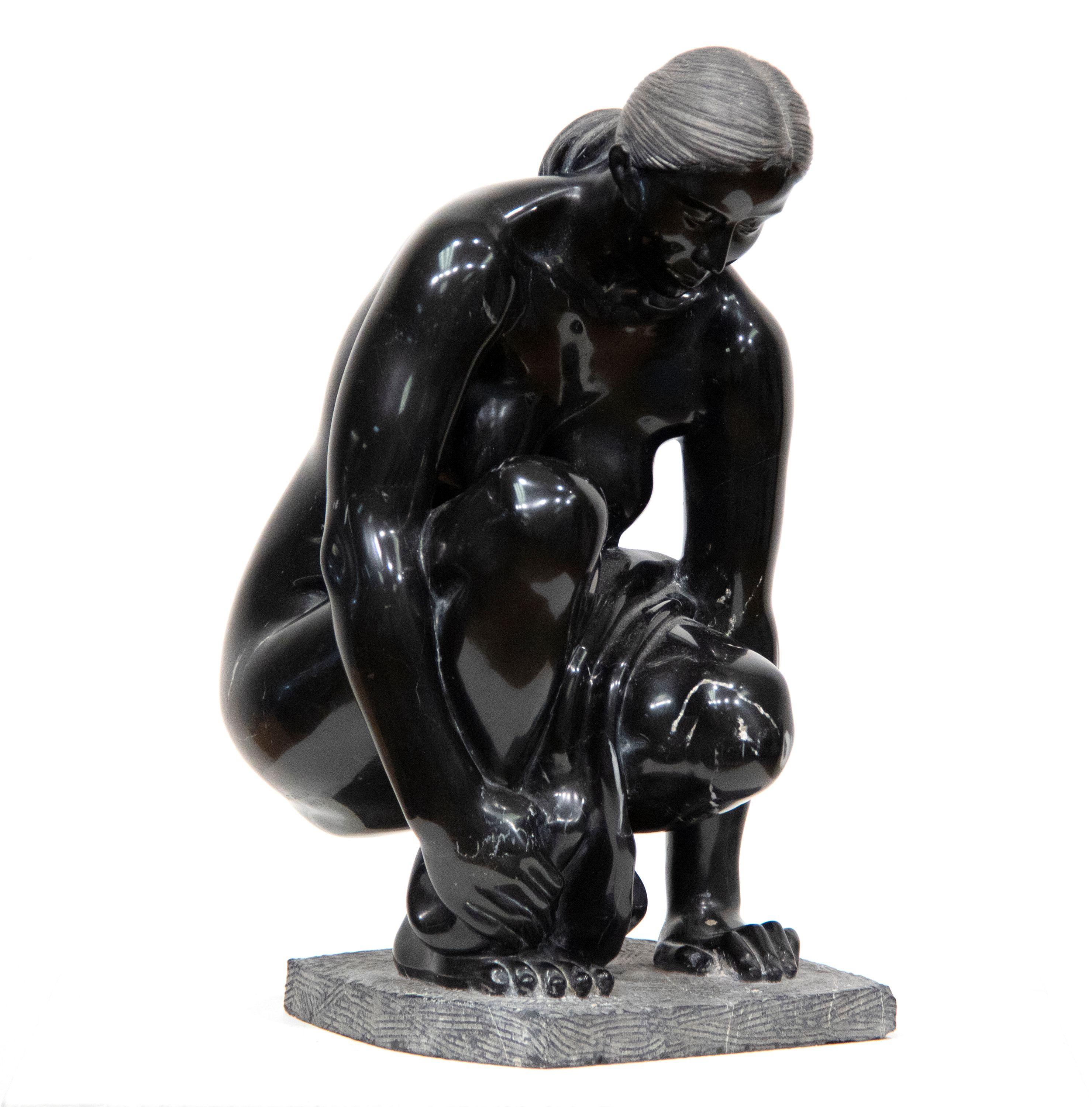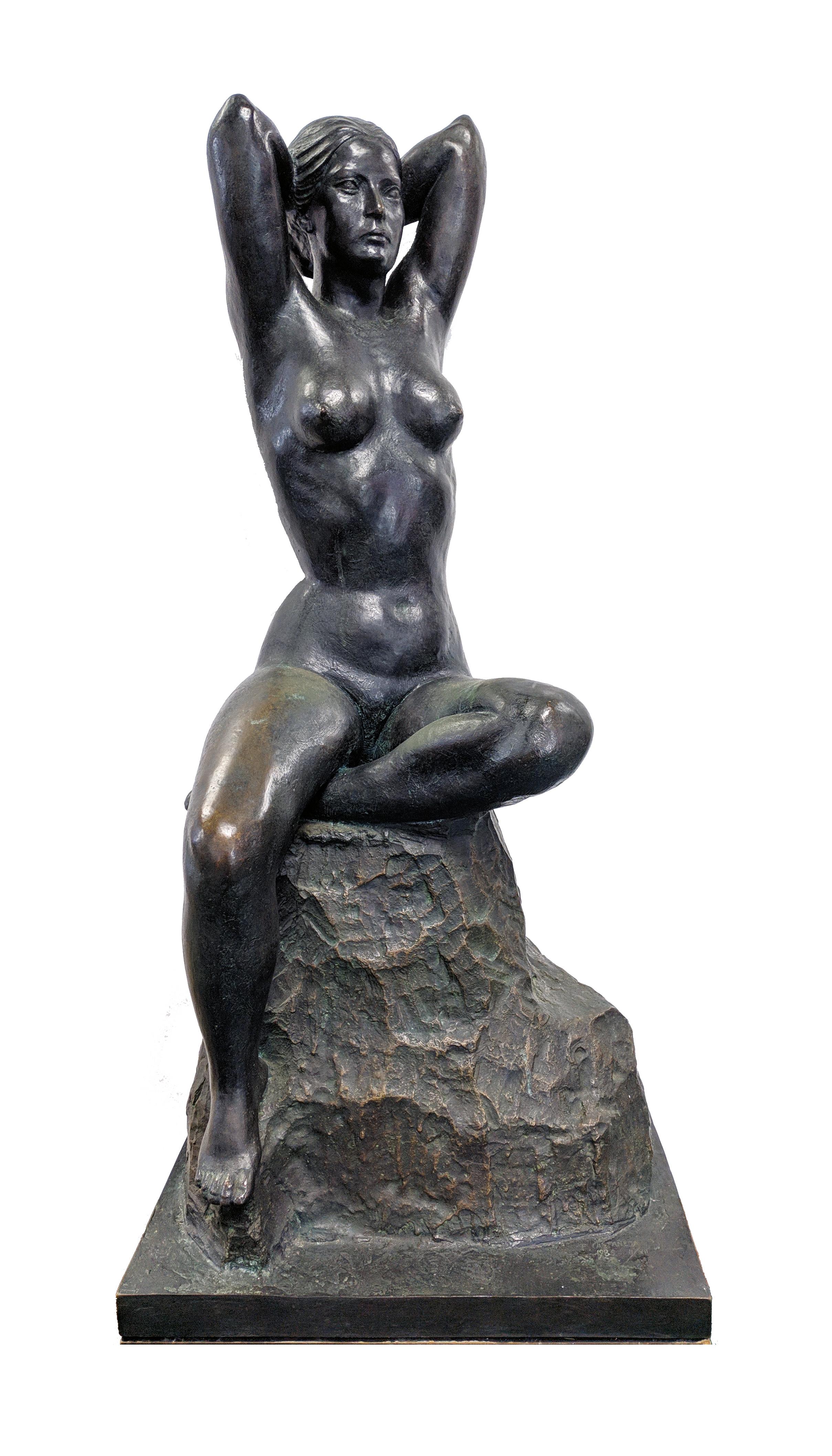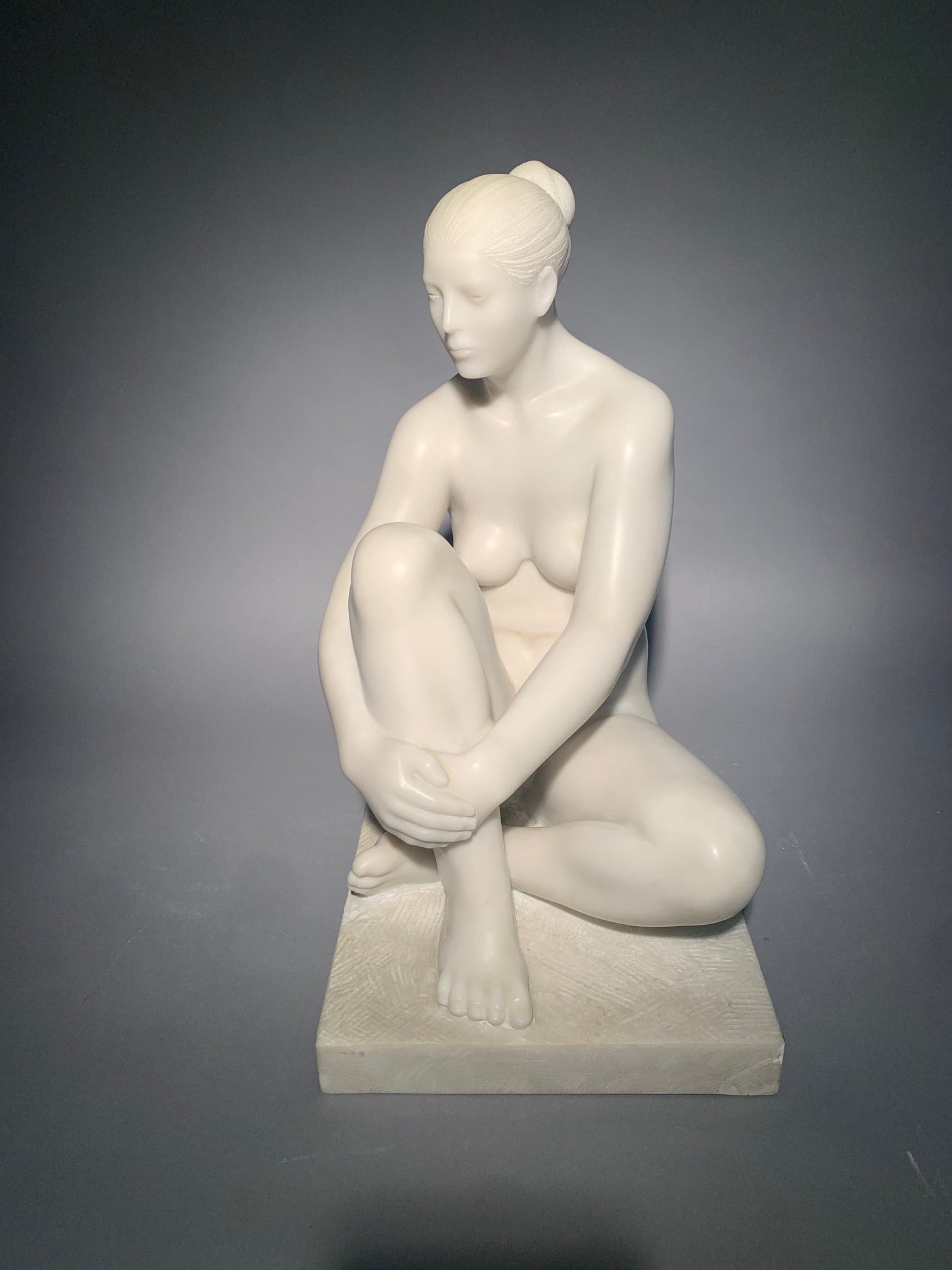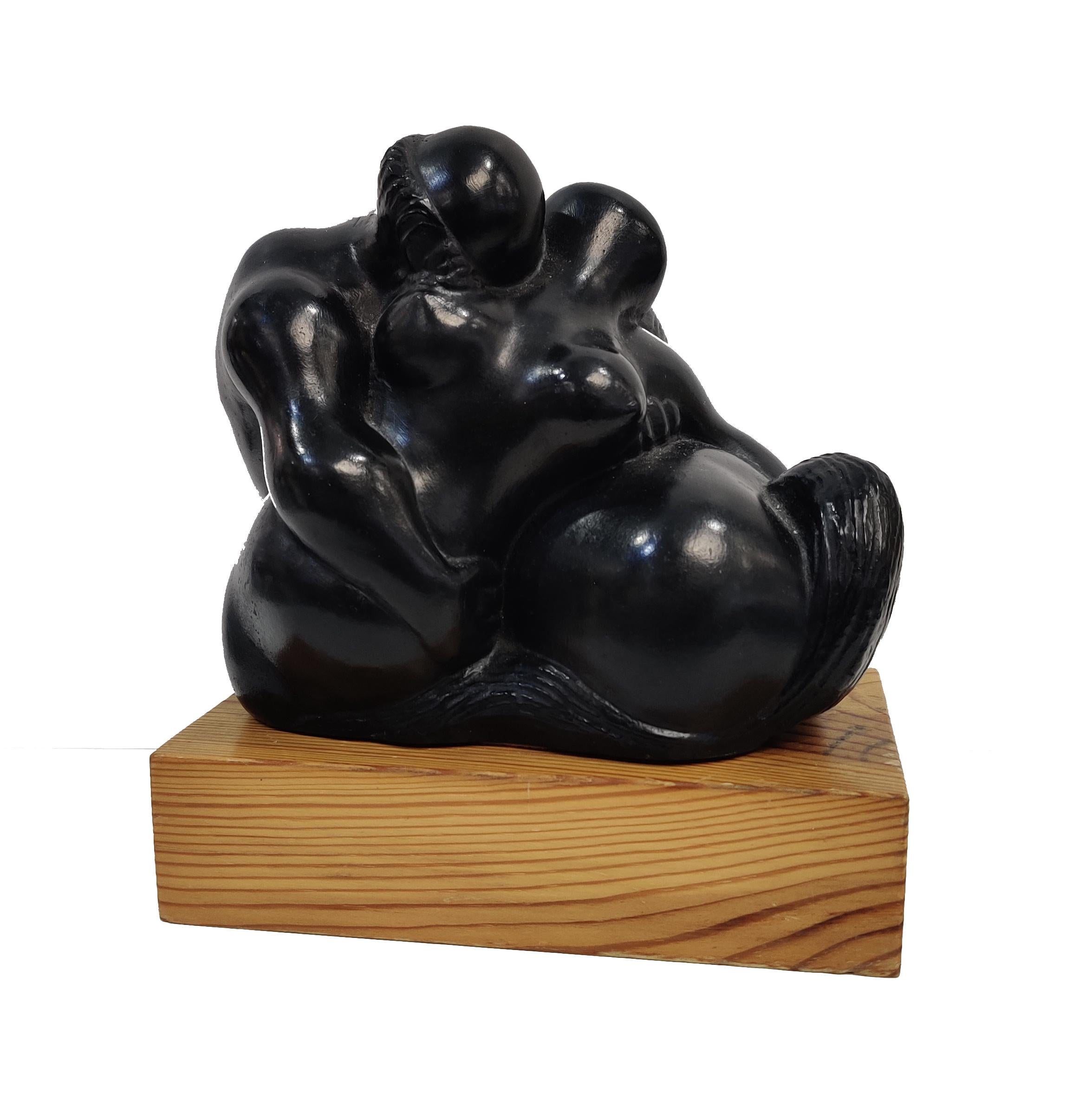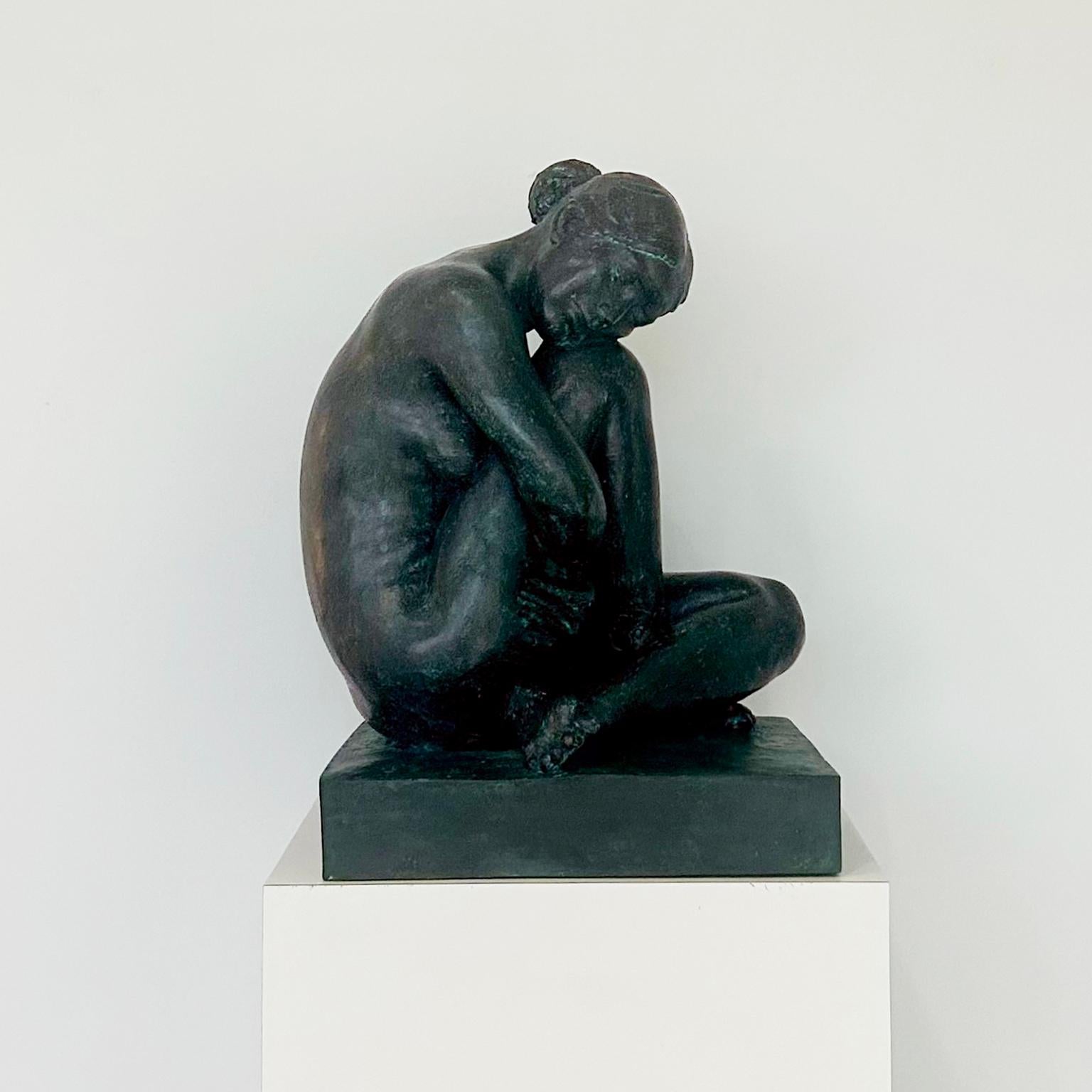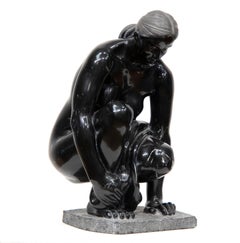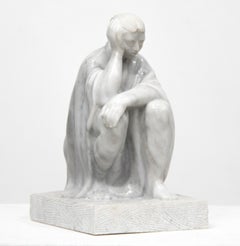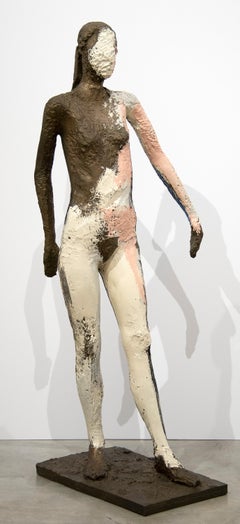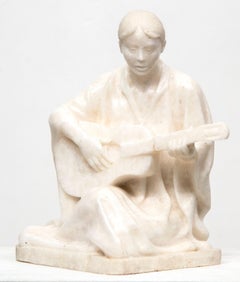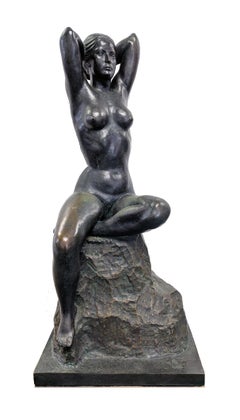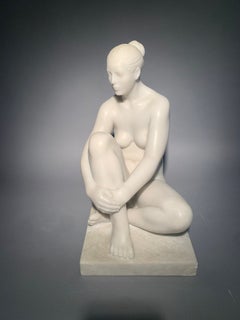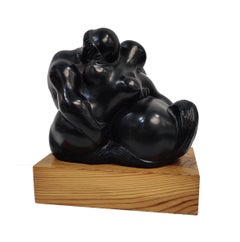Items Similar to Mujer Peinandose
Want more images or videos?
Request additional images or videos from the seller
1 of 6
CASTANEDA, FELIPEMujer Peinandose1983
1983
$25,000
£18,991.58
€21,868.70
CA$35,765.03
A$39,230.78
CHF 20,229.84
MX$468,572.70
NOK 256,575.90
SEK 240,697.31
DKK 163,424.40
About the Item
A sculpture by Felipe Castaneda. "Mujer Peinandose" is a figurative sculpture, bronze by Mexican contemporary artist Felipe Castaneda. The artwork is signed on the lower back, ""F. Castaneda V/VI/VII/1983". Felipe Castaneda was born on December 16, 1933 in Michoacan, Mexico. He is an internationally renown sculptor and is a man of great sensitivity and enormous talent. His exhibits have been held in the United States, Mexico and Europe.
In 1958 he came upon a teacher from an art trade school. The teacher explained the classes that the school offered and Felipe decided that he was going to go to school. He enrolled that same day and took classes in drawing, modeling, carving and constructive drawing. He absorbed knowledge very quickly and was adept at carving and sculpting. In 1962 he began working for the National Museum of Anthropology in Mexico City. It was at this time that Castan~eda became assistant to Francisco Zun~iga, world renown sculptor.
The female forms that Felipe Castan~eda creates out of marble, onyx, and bronze embody both the traditional and modern sensibilities of Mexico. Forms of motherhood and fertility evoking the pre-Columbian culture are coupled with an abstract, stylized interpretation of sensuality that is universal in its depiction of female beauty. Castan~eda transforms his subjects’ contemplative expressions and simple gestures into noble artistic expressions. Each of the women Castan~eda creates is mysterious and provocative. They have perfect proportions owing to his profound knowledge of human anatomy. His sculptures are executed in the Greco-Roman style of beauty. His marble and onyx figures, when completed, gleam like polished jewels.
Castan~eda has exhibited and been recognized in his native Mexico and around the world. His commissioned public sculptures are placed in a number of Mexican cities as well as in Palm Springs, California. His work can be found in the permanent collections of the Los Angeles County Museum of Art and the Museum of Art History in Cuidad Juarez, Mexico, among many others. Honors, including one from UNICEF in 1980, from Israel in 1996, and from the International Academy of Modern Art in Rome in 1998 have been bestowed upon him.
Provenance: Private Collection, New York.
- Creator:
- Creation Year:1983
- Dimensions:Height: 16.25 in (41.28 cm)Width: 11.75 in (29.85 cm)Depth: 11 in (27.94 cm)
- Medium:
- Movement & Style:
- Period:
- Condition:
- Gallery Location:Palm Desert, CA
- Reference Number:Seller: 317181stDibs: LU939601142
About the Seller
4.8
Recognized Seller
These prestigious sellers are industry leaders and represent the highest echelon for item quality and design.
Established in 1996
1stDibs seller since 2011
113 sales on 1stDibs
Typical response time: 3 hours
- ShippingRetrieving quote...Shipping from: Palm Desert, CA
- Return Policy
Authenticity Guarantee
In the unlikely event there’s an issue with an item’s authenticity, contact us within 1 year for a full refund. DetailsMoney-Back Guarantee
If your item is not as described, is damaged in transit, or does not arrive, contact us within 7 days for a full refund. Details24-Hour Cancellation
You have a 24-hour grace period in which to reconsider your purchase, with no questions asked.Vetted Professional Sellers
Our world-class sellers must adhere to strict standards for service and quality, maintaining the integrity of our listings.Price-Match Guarantee
If you find that a seller listed the same item for a lower price elsewhere, we’ll match it.Trusted Global Delivery
Our best-in-class carrier network provides specialized shipping options worldwide, including custom delivery.More From This Seller
View AllMujer Hincada
By CASTANEDA, FELIPE
Located in Palm Desert, CA
A sculpture by Felipe Castaneda. ""Mujer Hincada"" is a figurative sculpture, black onyx by Mexican contemporary artist Felipe Castaneda. The artwork is signed in the lower left, ""F...
Category
Late 20th Century Contemporary Figurative Sculptures
Materials
Stone
Pensando
By Felipe Castañeda
Located in Palm Desert, CA
A sculpture by Felipe Castaneda. "Pensando" is a contemporary figurative white marble sculpture by Mexican artist Felipe Castaneda. The artwork is signed in the lower right, " F. Cas...
Category
Late 20th Century Contemporary Figurative Sculptures
Materials
Marble
Untitled
By Manuel Neri
Located in Palm Desert, CA
A sculpture by Manuel Neri. "Untitled" is a Bay Area Figurative sculpture, painted bronze in a palette of browns, whites, and pinks by Post-War artist Manuel Neri. The artwork is sig...
Category
Late 20th Century Post-War Figurative Sculptures
Materials
Bronze
$145,000
Mujer con Guitarra
By CASTANEDA, FELIPE
Located in Palm Desert, CA
A sculpture by Felipe Castaneda. Mujer con Guitarra"" is a figurative sculpture, white and gray marble by Mexican contemporary artist Felipe Castaneda. The artwork is unsigned. Felip...
Category
Late 20th Century Contemporary Figurative Sculptures
Materials
Marble
La Peluquera
By Saul Kaminer
Located in Palm Desert, CA
A large, colorful oil on canvas abstract painting by Saul Kaminer depicting La Peluquera, the hairdresser, with a client in her chair, scissors in hand.
Provenance:
Kaminer, Galerie Thomas...
Category
1980s Contemporary Abstract Paintings
Materials
Canvas, Oil
Aljama
By AMATO, MICAELA
Located in Palm Desert, CA
A sculpture by Micaela Amato. “Aljama” is a contemporary sculpture, cast leaded glass in browns, yellows, and greens by American female artist Micaela Amato. The artwork is unsigned....
Category
21st Century and Contemporary Contemporary Figurative Sculptures
Materials
Glass
$16,000
You May Also Like
UNTITLED (NUDE)
By Felipe Castañeda
Located in Aventura, FL
Bronze sculpture. Incised artist signature with date and edition. Size includes base. Additional images are available upon request. Certificate of Authenticity is included. Please ...
Category
1980s Contemporary Figurative Sculptures
Materials
Bronze
$20,300 Sale Price
30% Off
Felipe Castañeda
By Felipe Castañeda
Located in New York, NY
Felipe Castañeda Felicidad (1984)
Marble sculpture Measure: H 18 inches
Signed F Castanee 1984.
Category
20th Century Mexican Modern Figurative Sculptures
Materials
Marble
$17,000
Mexican indian woman with Water Pot (In the style of Francisco Zúñiga)
Located in Guadalajara, Jalisco
Mexican Indian Woman with Water Pot (In the style of Francisco Zúñiga)
Unknow Artis
Lost Wax Bronze
45 x 35 x 35 cm
1960, MX
No base
Category
1970s Expressionist Figurative Sculptures
Materials
Bronze
LA FEMME ET LE CENTAURE
By Baltasar Lobo
Located in Aventura, FL
Cast in bronze in 1968 in an edition of 8. Wood base. Incised 'Lobo' with edition and foundry. From the edition of 8. Sculpture size not including base 5.25 x 6.25 x 4 inches.
Artw...
Category
1960s Contemporary Figurative Sculptures
Materials
Bronze
$28,000 Sale Price
20% Off
"Untitled" bronze sculpture of seated female figure by artist Felipe Castañeda
By Felipe Castañeda
Located in Boca Raton, FL
"Untitled" bronze sculpture of a female nude by artist Felipe Castañeda. Inscribed F. Castañeda 1984 P/A on base.
Category
1980s Modern Figurative Sculptures
Materials
Bronze
Bather Washing Hair
Located in New Orleans, LA
Artist Enrique Alférez was born in Zacatecas, Mexico and lived nearly the entire 20th century. After service in the Mexican Revolution as a youth, he emigrated to Texas, studied in C...
Category
1980s Art Deco Nude Sculptures
Materials
Bronze
Price Upon Request
More Ways To Browse
Sculpture Mexico Bronze
Mexican Michoacan
J J Big Floor Light
J Steele
James Scoppettone
James Walter Gozzard
James Webb Oil Paintings
Jan Asselijn
Jane Hill
Japanese Erotic Print
Japanese Oil Painting Signed
Jean Pal Posters
Jesus Last Supper
Joaquin Terruella Matilla
John Bratby
John Budicin
John Thomas Serres
John Wootton
